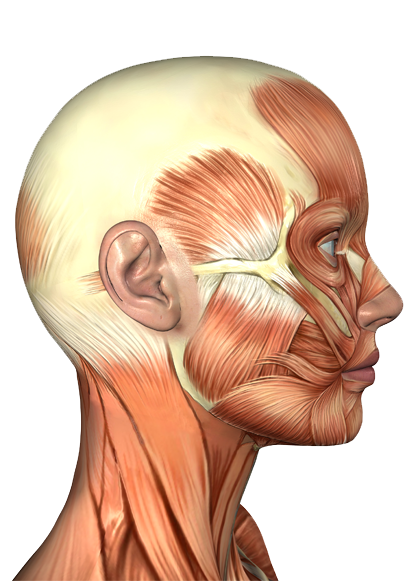Masseter Muscle
The name for the masseter muscle is formed from a Greek word, “masathai” which means chew. It is a prominent muscle of the jaw. It arises from the zygomatic bone (cheekbone)and is inserted to the rear of the mandible (jawbone).
read moreOmohyoid Muscle Trapezius Muscle Masseter Muscle Orbicularis Oris Muscle Mentalis Muscle Depressor Labii Inferioris Muscle Depressor Anguli Oris Muscle Buccinator Muscle Zygomaticus Major Muscle Zygomaticus Minor Muscle Levator Labii Superioris Muscle Temporal Muscle Orbicularis Oculi Muscle Sternocleidomastoid Muscle Frontalis Muscle
Masseter Muscle
The superficial part inserts on the masseteric tuberosity on the outer surface of the mandibular angle, whereas the deep part runs further dorsally to the outer surface of the mandibular ramus. You can feel this part of the masseter from inside the oral cavity along the cheek. In addition, the deep fibers radiate into the anterior capsule and articular disc of the temporomandibular joint.
The parotid gland lies to the lateral side of the masseter with its’ duct coursing beneath the zygomatic arch across the muscle. Besides being one of the four muscles of mastication the masseter muscle helps stabilize tension on the articular capsule of the temporomandibular joint. As with all muscles of the mastication process, the masseter is supplied by a branch of the mandibular nerve, the masseteric nerve. This muscle also allows for the protrusion (movement forward) of the mandible.
Report Error



